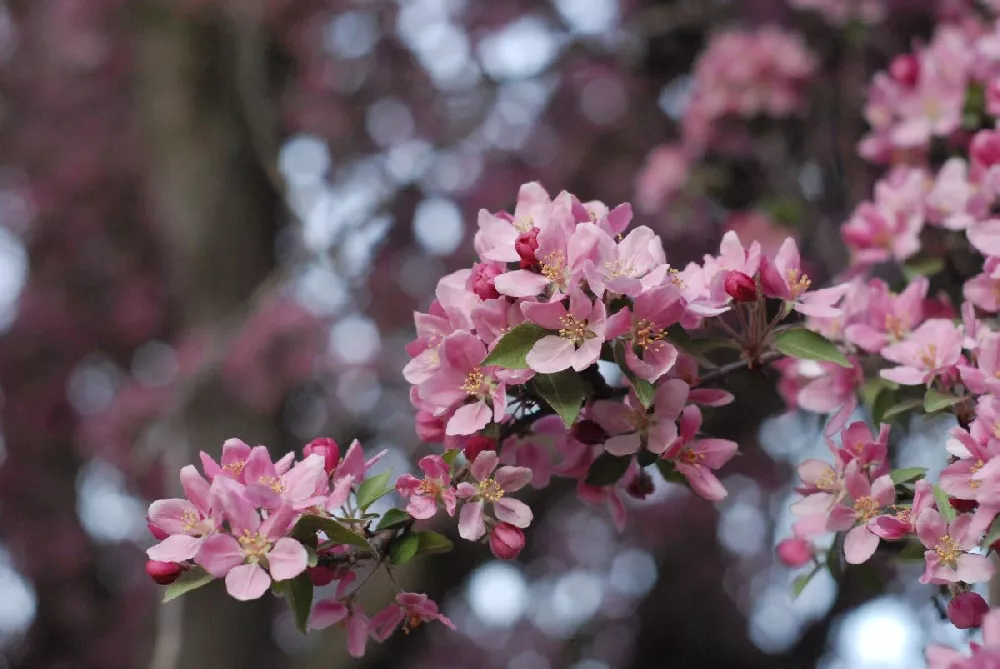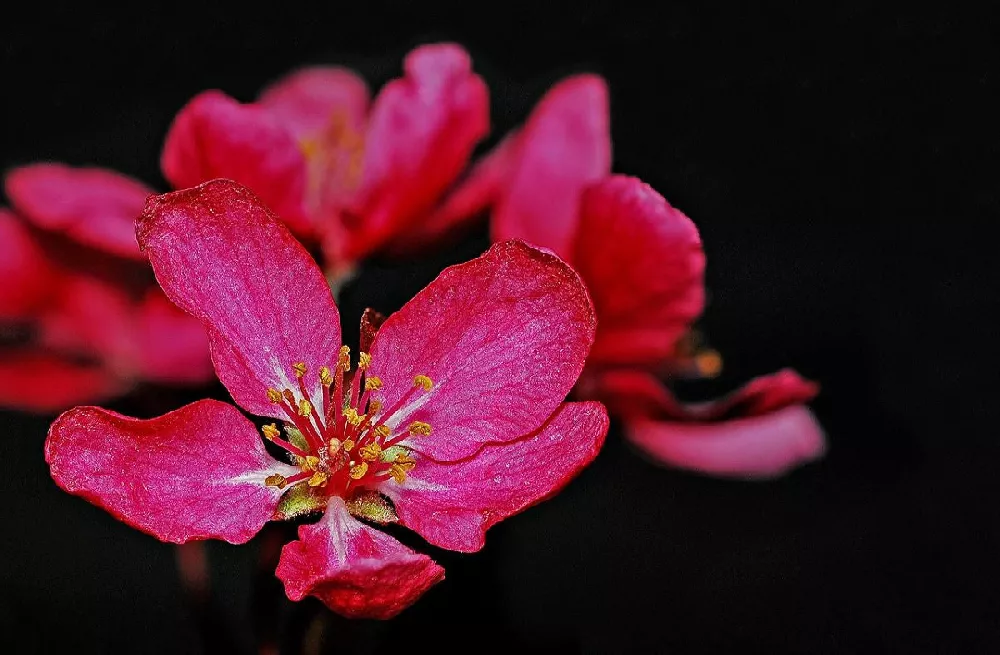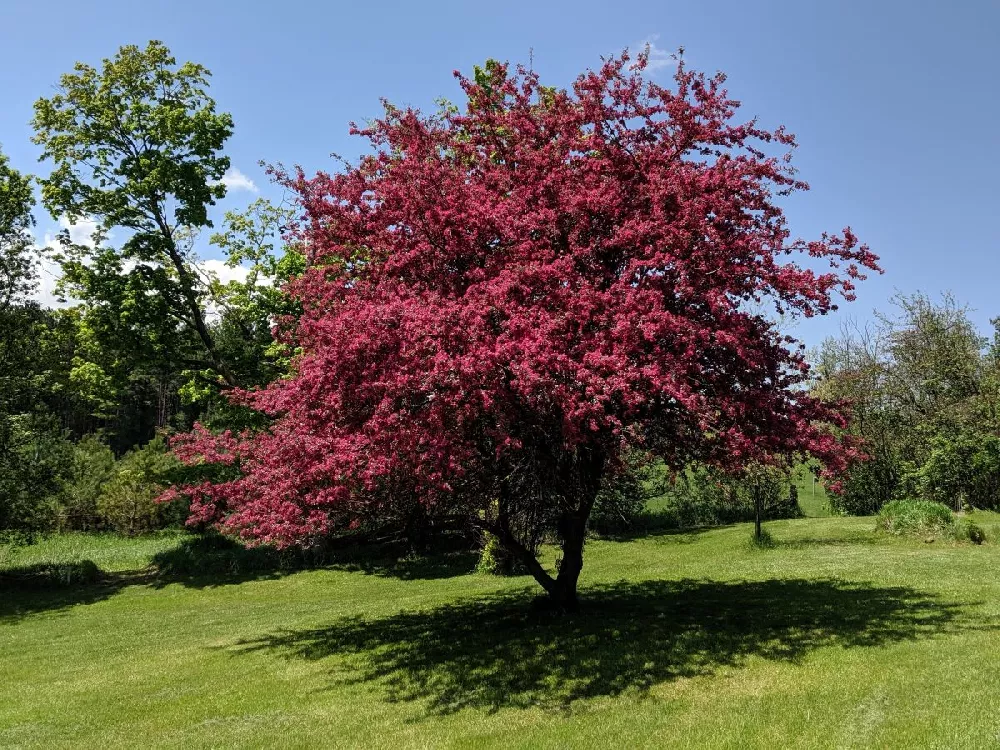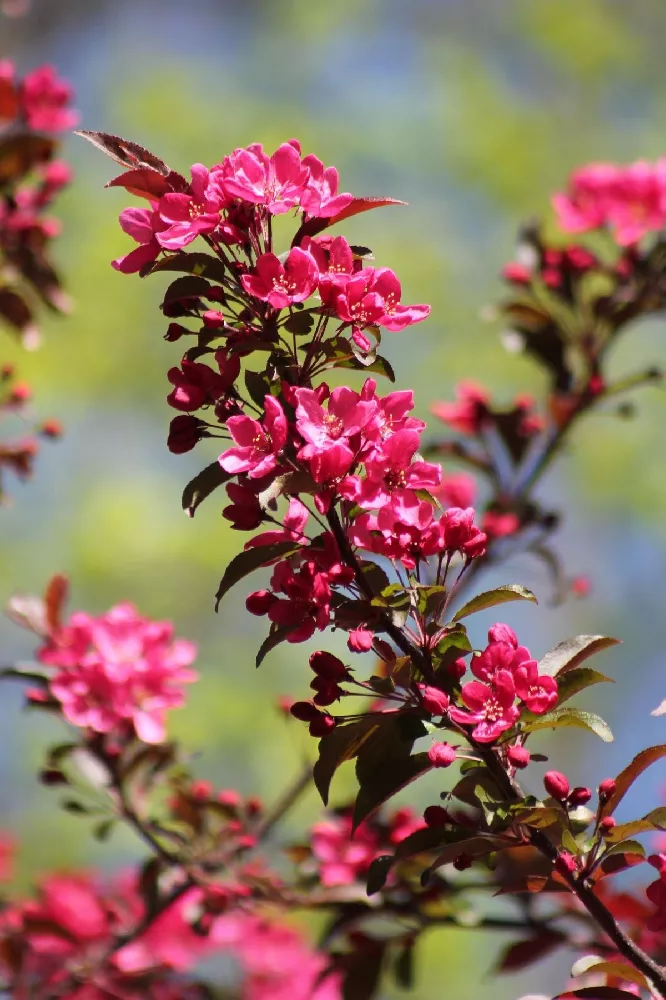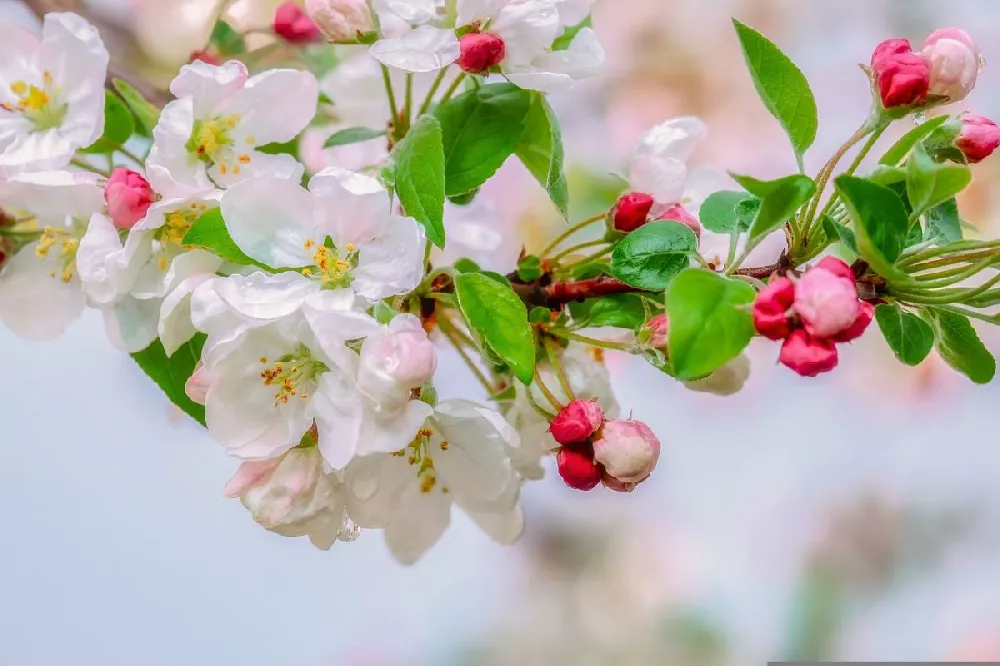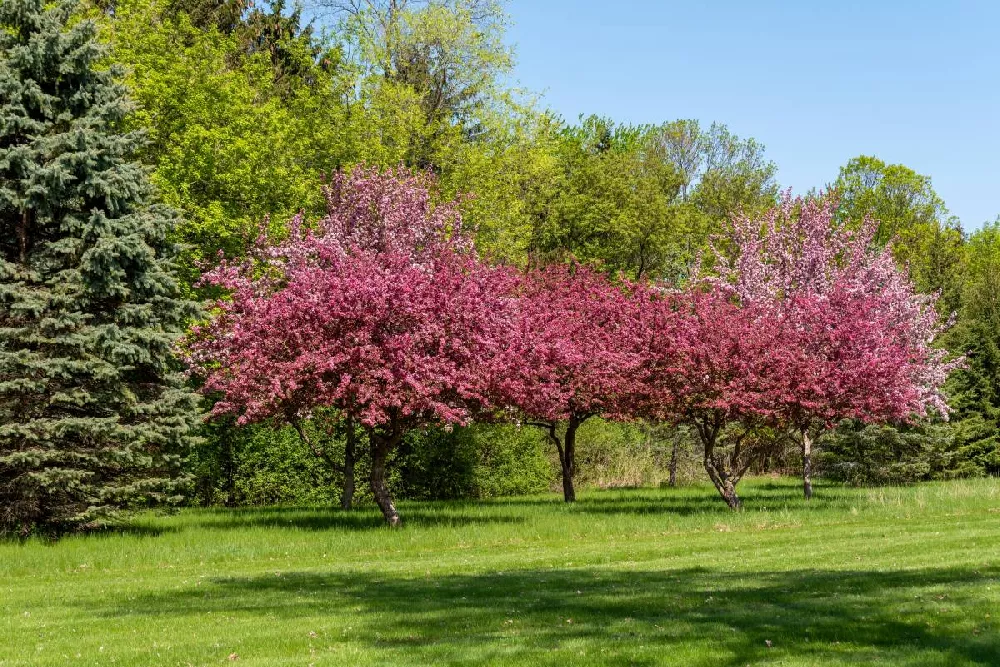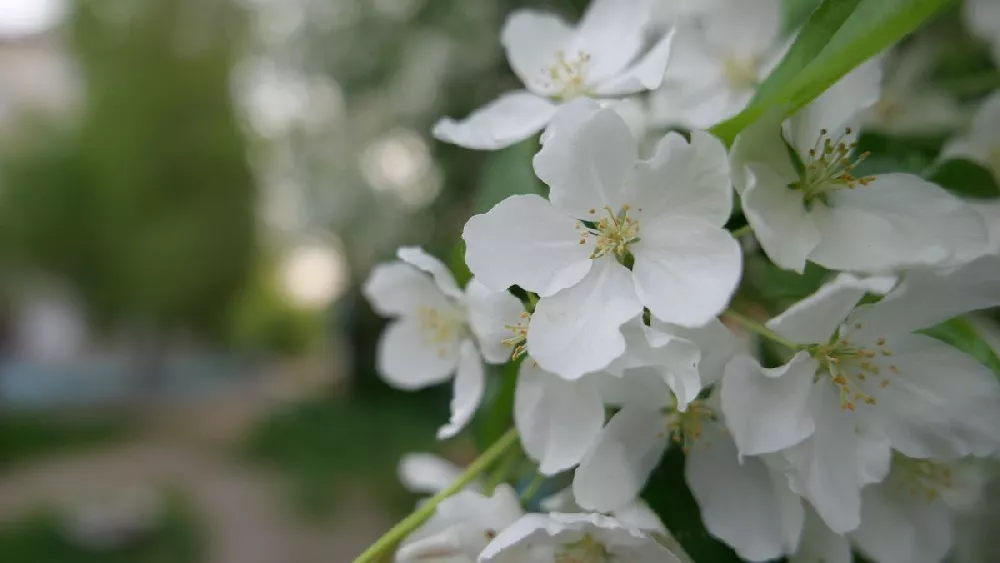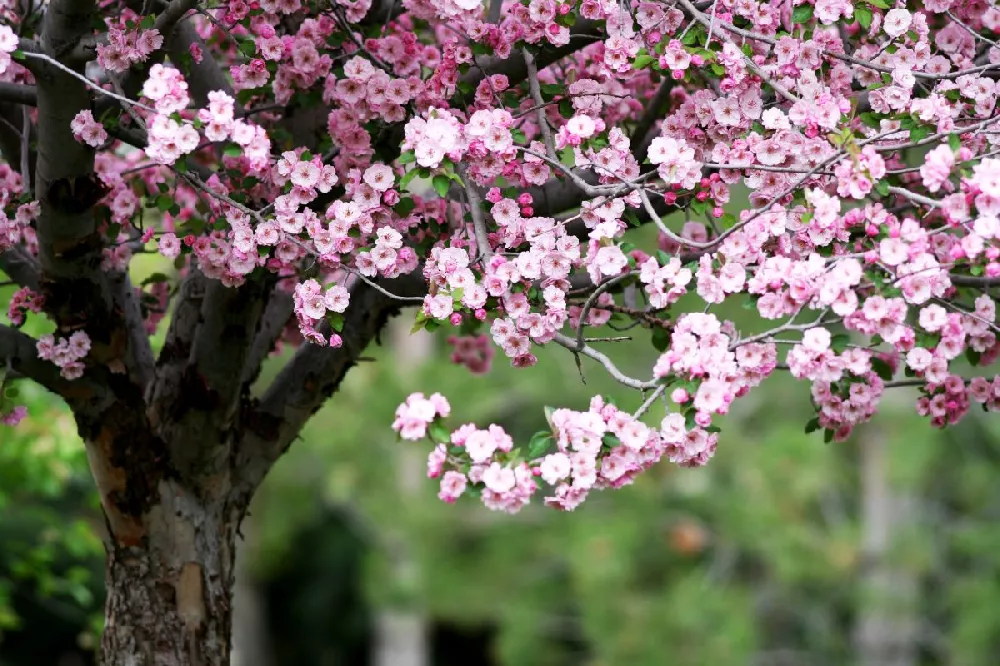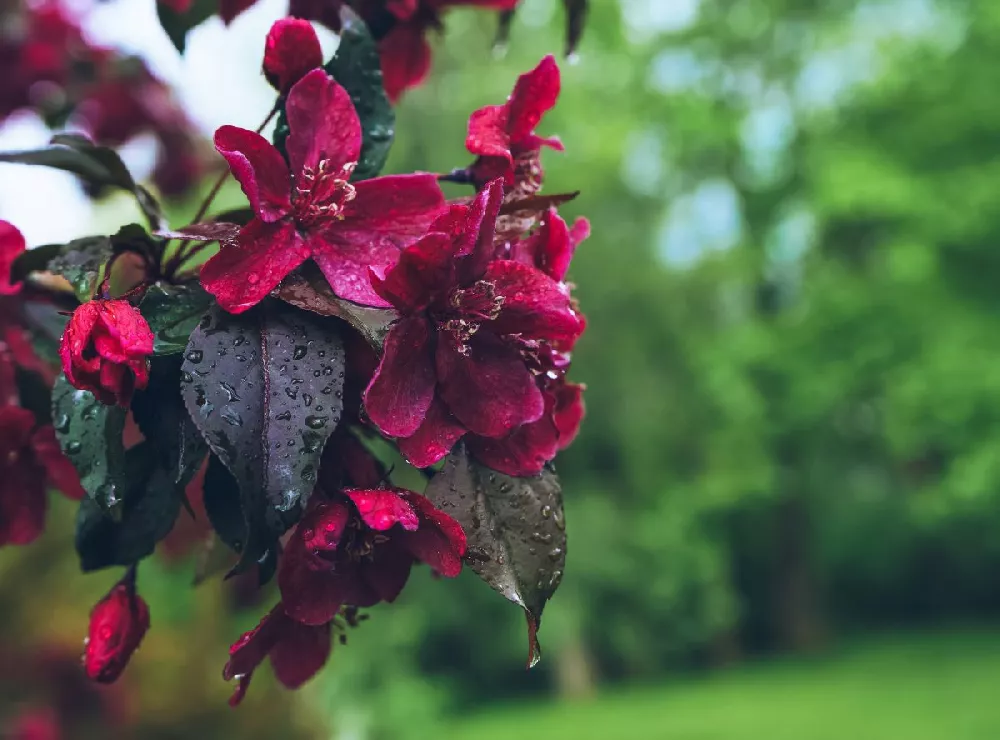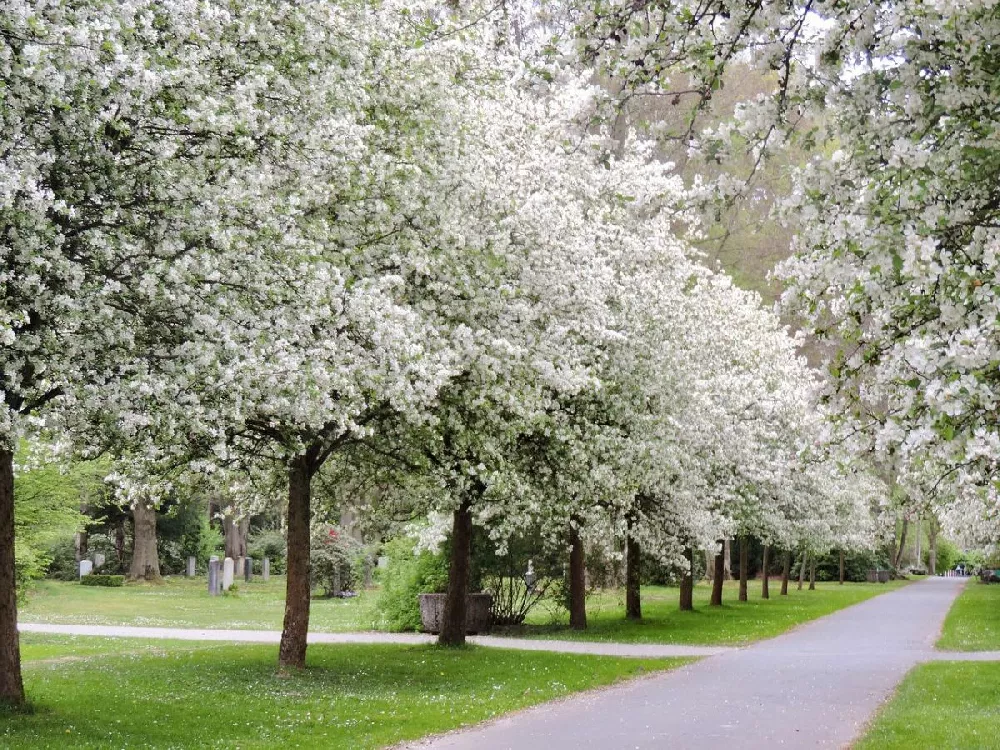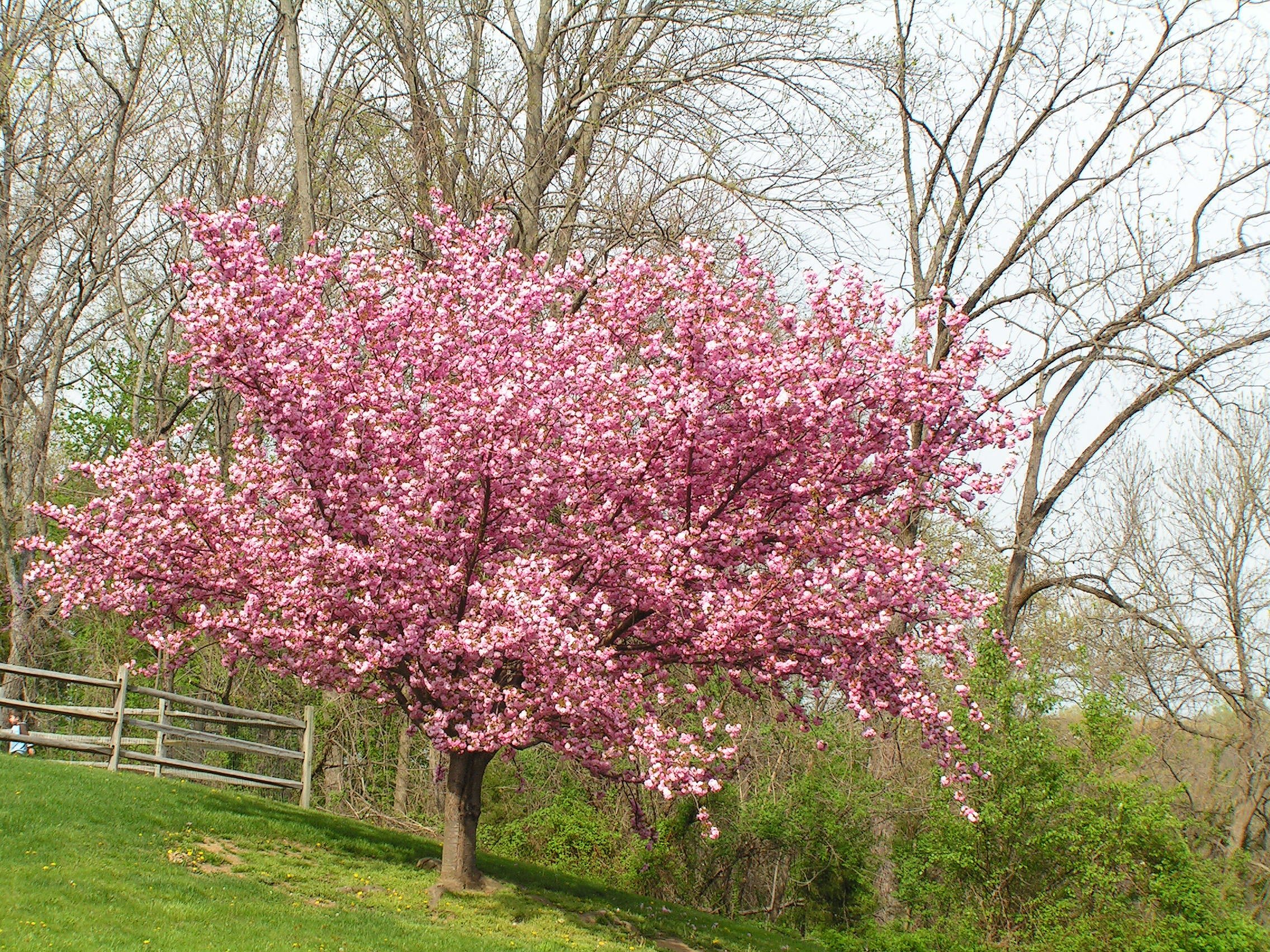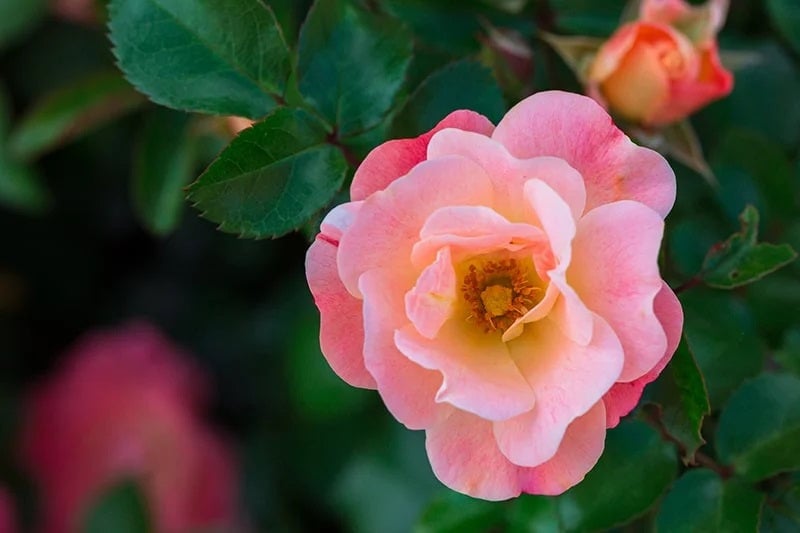- Home >
- Crabapple Trees
Crabapple Trees for Sale
Filters
Price Range
Growing Zones
Plant Type
Sunlight
Mature Height
Plant Characteristics
10 Results
-
Growing Zone(s): 4-8$129.95
-
Growing Zone(s): 4-8$129.95
$139.95Save up to 7% -
Growing Zone(s): 4-8$119.95
-
Growing Zone(s): 4-8$129.95
-
Growing Zone(s): 4-8$71.95
$119.95Save up to 40% -
Growing Zone(s): 4-8$124.95
-
Growing Zone(s): 4-8$179.95
-
Sold OutGrowing Zone(s): 4-8$79.95
-
Sold OutGrowing Zone(s): 4-8$99.95
-
Sold OutGrowing Zone(s): 3-7$89.95
Crabapple Trees – Buying & Growing Guide
Crabapple Trees are a wonderful addition to a backyard or garden for a whole host of reasons. They are easy to care for, requiring very little maintenance aside from watering during the early years, and occasional pruning. As they mature, they become drought tolerant and need very little care or attention. They provide year-round interest in a garden, with a changing look every season. Keep reading to learn more about how to care for your crabapple tree.
How to Grow Crabapple Trees
How to plant crabapple trees
Plant your crabapple in a spot that receives full sun-at least six hours of direct light a day. Your sapling will do best in slightly acidic soil. Do a soil test if you’re not sure, and add peat moss, sulfur, or an acidic fertilizer to your soil if necessary.
Dig a hole as deep as the root ball and twice as wide. Ease the sapling out of the pot and check to be sure there are no circling roots that might eventually strangle the plant. If there are circling roots, trim them back or tease them out. Place your tree in the hole with the root ball level with the ground. Backfill (replace the dirt removed from the hole) with your compost-enriched soil, and tamp down.
Your newly-planted tree will need a long drink of water, and you can expect to water it weekly for the first few months after planting-it will need about an inch of water a week or more. If your region is experiencing a dry spell, you may need to water as often as every day.
How to achieve maximum results
Choosing the right variety of crabapple for your garden can help you achieve maximum results. If you’re looking for a focal point for a small backyard garden, for example, avoid varieties that top at 35 feet. Look for varieties resistant to common crabapple diseases, such as fire blight and rust. Ask questions at your garden center and read the tags on any tree that you’re interested in, so you’re sure to purchase a variety that is suited for your needs.
How to Care for Crabapple Trees
Watering and nutrients
Once your tree is established, you shouldn’t need to do much supplemental watering unless your region is experiencing a drought. A good rule of thumb is to give your tree an inch of water a week. Mulching the area around the tree will help it conserve moisture and spare you the task of watering as frequently as you would need to otherwise.
You won’t need to fertilize your crabapple in the first year, especially if you have amended the soil with a healthy dose of compost before planting your tree. After the first year, a light application of a balanced fertilizer (such as 10-10-10) out to the tree’s drip line in late winter will give your plant a boost.
Pollination
Crabapples are a variety of apple tree and are pollinated in a similar manner, via bees, birds, and other wildlife, who distribute pollen from one tree to another as they feed on nectar. Crabapples are very effective pollinators, and are often grown in production apple orchards to help pollinate the apple trees.
Pruning
Lightly prune your crabapple tree in the spring. You shouldn’t need to prune heavily-just clip out dead and diseased branches, as well as those that are crossing over each other. Also, trim suckers that appear around the base of the trunk. Crabapples have a naturally pleasant silhouette, so there should be little need to prune for shape.
Pests and diseases
Some varieties of crabapple are susceptible to apple scab, which leads to branch die-off. A fungicide will help address this. Crabapples are also prone to many of the common diseases of fruit trees, such as fire blight and apple scab. When choosing your tree, look for varieties that are resistant to these diseases.
Watch your crabapples for signs of aphids, which may appear on the underside of leaves, as well as gypsy moths, tent caterpillars, and webworms. All these pests can limit the growth and vitality of your tree. A general insecticide may help eradicate an infestation, as will the use of biological agents such as ladybugs, which feast on aphids.
Harvesting
Although most gardeners grow crabapples for their flowers, the fruit can be eaten, although it is tart and not good raw. Edible varieties have slightly larger fruit – up to two inches in diameter – and can be harvested by hand in mid-fall, at roughly the same time as regular apples are harvested.
Soil
Crabapple Trees like a moderately fertile soil which is well-draining. To improve the content of your soil before planting your crabapple tree, you can mix organic compost into it to provide the tree with essential nutrients. This will also improve its draining ability, or alternatively to improve drainage you can mix some sand into the soil.
To maintain fertile soil, you can top-dress it annually with a nutrient-dense compost or organic mulch. If you do this, then the nutrients will gradually make their way down into the soil with watering, and provide a steady release of nutrients to the roots of the tree. This will prevent having to use a fertilizer for feeding and will help to gradually improve the quality of soil over time.
Light
Crabapple trees need to be planted in a position of full sun. Without this, they will struggle to produce the abundance of flowers we have come to associate with flowering crabapple trees. This tree in a shaded position will, therefore, produce much less fruit, and it will grow into a much less attractive shape, the branches stretching out to find a source of light, instead of forming a dense mass.
When planting your crabapple tree, ensure it will have access to direct sunlight throughout the day in order to truly get the best from your tree. There are some varieties of crabapple tree that can survive in partial shade, though they will still need a few hours of full sun throughout the day.
Temperature
Crabapple trees don’t grow well in hot climates, preferring areas with warm summers and cold winters. They typically do well in the northern U.S. and Canada, as well as England and other mild regions of Europe.
Fruit
The fruit of a crabapple tree comes from the flowers, so if you want plenty of crabapples, you will need to encourage lots of blooms. This can be done by applying an organic mulch to the top of the surrounding soil or feeding the tree with slow-release fertilizer annually. The crabapples are edible, but the flavor varies depending on the type of tree. Most crabapple trees produce quite bitter or sour fruits, but they are well suited to making delicious apple sauce, jams and jellies, and flavored liquors, among other things.
The fruits hang onto the tree well beyond when the foliage falls. However, they will eventually fall to the ground. For this reason, it is best not to plant a crabapple tree near a walkway or patio area because the ground will become strewn with any unused mushy apples, and you don’t want those underfoot. If you like the crabapple tree but would prefer not to have to deal with the mess on the ground from the fruit, there are particular varieties of this tree you can buy that don’t produce fruit. However, even the ‘fruitless’ varieties may produce occasional crabapples, but not enough to cause a mess.
Types of Crabapple Trees
Malus ‘Brandywine’
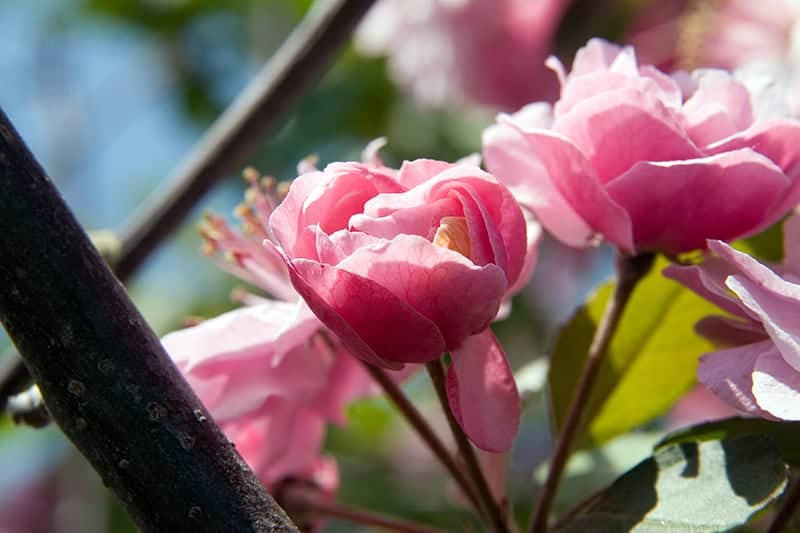
This is a medium-sized variety of crabapple tree, growing to a mature height of between 15-20 feet. It features a stunning array of colors all year round. In spring the leaves start out a bright cherry red, then turning to a deep green as they age. The flowers of this tree are double blooms in vibrant shades of pink and red, and they appear in the middle of spring and have a good run of around four weeks. The fruit of the tree is yellow, but does not hang on for as long as some other crabapples, and can make a mushy mess on the ground if allowed to drop. Leaves turn a deep shade of purple-red in autumn before they fall. This variety of crabapple tree has very good resistance to powdery mildew and enjoys full sun and fertile, well-draining soil.
Malus ‘White Angel’
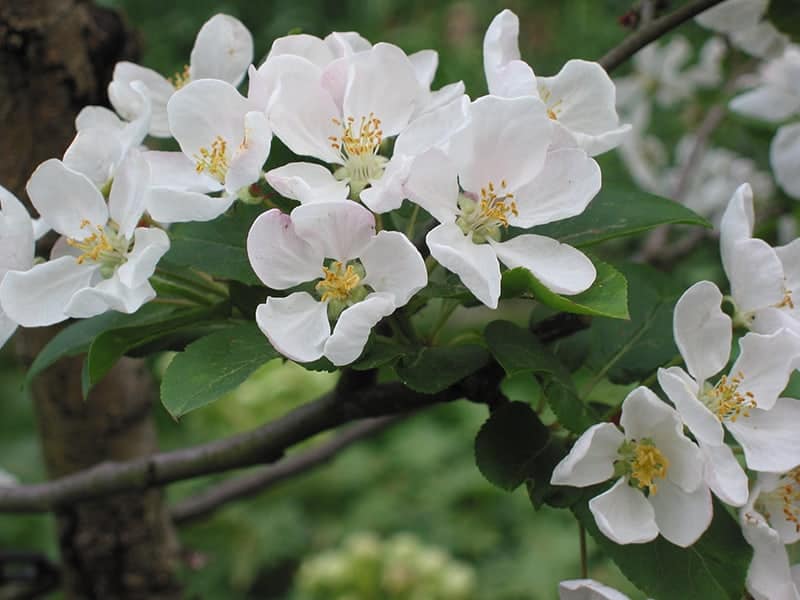
This variety of crabapple is quite tall, growing up to 30 feet in height. As the name suggests, this tree has beautiful white flowers that bloom from delicate pink buds. The fruits of this tree measure around a quarter-inch across and are red in color. They hang onto the tree for a substantial time, and can usually still be seen dangling from the bare branches in winter. This tree has excellent disease resistance. It is rarely affected by powdery mildew, apple scab, cedar-apple rust, and leaf spot, and is moderately resistant to apple blight.
Malus x zumi ‘Golden Hornet’
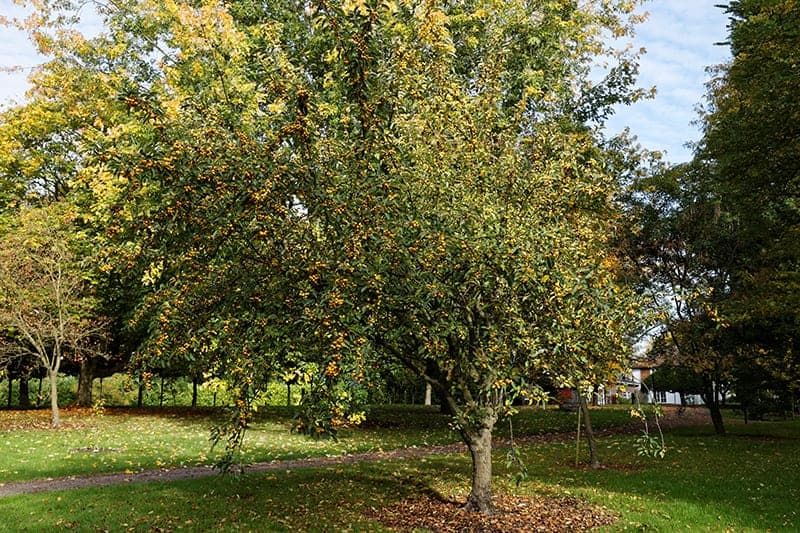
This tree is commonly grown among other fruiting trees because it has such an abundance of flowers that it is ideal for providing a source of pollen to fertilize nearby apple trees. The flowers of this try start out as pink buds and open into luscious white blooms. They are quite late in flowering for a crabapple tree, typically blooming in late spring. The fruits of this tree are where it gets its name, as the crabapples grow in a bright golden yellow. The are oval in shape, and quite petite at around 1 inch long. This tree likes a moderately fertile soil composition and can grow in both positions of full sun and partial shade.
Malus ‘Coralburst’
If you’re looking for a compact crabapple tree, then the Coralburst is a great option. At a mature height of just 8-10 feet, this makes a great ornamental tree even in very small gardens. Its pink flowers bloom en masse from coral colored buds, making a spectacular impact on the dense tree during mid-spring. Rust-orange fruits appear at the end of summer and hang around until late fall. They are also compact, measuring around half an inch across. Another benefit of this tree is that it is disease-free, particularly of apple scab which destroys a lot of crabapple trees. It is very hardy, and drought tolerant once mature. It likes to grow in a position of full sun in well-draining soil, and due to its size can be grown in a container.
Malus ioensis ‘Prince Georges’
This is another compact example of a crabapple tree, growing to between 10 and 15 feet. It has an additional feature of being fruit-free, so if you like the look of crabapple trees but don’t want the clean-up that goes along with a fruit-bearing tree, then this could be the one for you. It also produces incredible flowers in pale pink to cream, blooming from deep pink buds. Each flower is quite sizeable considering the small stature of the tree, at around 2 inches across. The double flowers can have up to 60 petals each, giving them a very full and luscious look. With a dense and rounded form, this moderately disease-resistant tree is ideal for any sized garden.
Malus x robusta ‘Red Sentinel’
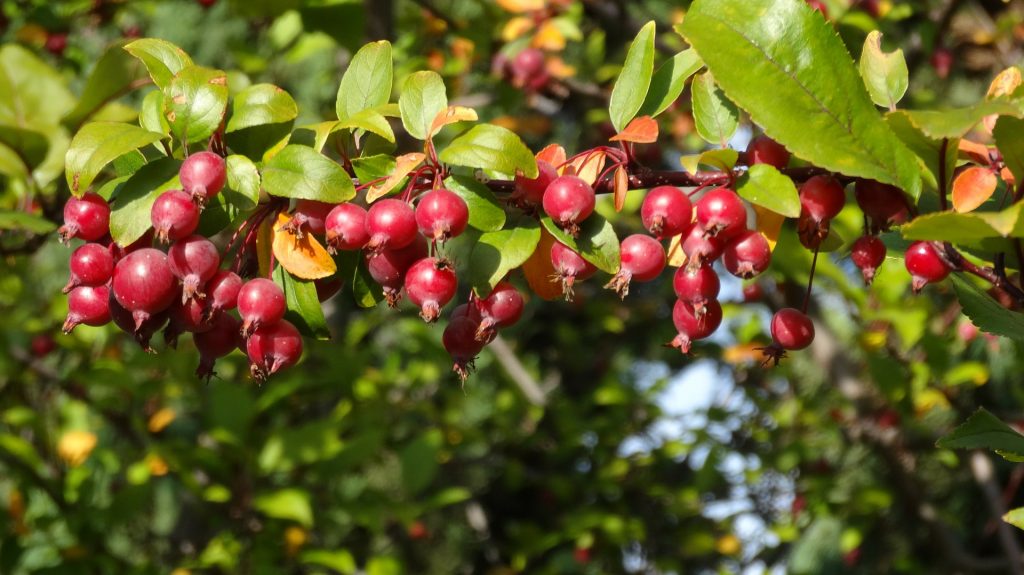
This compact crabapple tree grows to ten feet tall. It has won the prestigious Award of Garden Merit from the Royal Horticultural Society and features white flowers that bloom from deep pink buds. This tree flowers later than many other crabapple trees, blooming in late spring at around the same time as the leaves appear. The fruits of this tree look almost like cherries. They are vibrant red color and have a glossy exterior. The fruits are approximately 1 inch across and will hang onto the tree right into winter until they turn soft and fall or get devoured by birds. Another benefit of this type of crabapple tree is that it is resistant to apple scab, which is a problem for many apple trees.
Malus ‘Camelot’
This disease-resistant tree is of a compact size, at 10 feet tall. It features white blossoms that bloom from bright pink buds, and eventually turn to dark purple fruits. The thick leaves of this tree emerge in spring with a purple hue, before becoming green and then finally turning orange in the fall. The foliage has a leathery texture, providing a sturdy background to the abundance of flowers. This tree grows easily in positions of full sun in well-draining soil. It requires minimal maintenance, just occasional pruning of dead or damaged branches.
Malus ‘Charlottae’
This medium-sized tree features large pastel pink flowers that bloom in late spring or early summer. The fruit arrives in shades of yellow and green, measuring just a quarter to half an inch each. The fruit is especially attractive to birds, and much of it will get eaten by them and not make it to winter. This type of crabapple tree does have a habit of spreading, and as it matures, the branches can stretch out. It likes to be in a position of full sun and is susceptible to disease.
Malus x moerlandsii ‘Profusion’
This tree can grow to heights of 30 feet tall, with a rounded form and a spreading habit. It features red buds which bloom into showy pink blossoms in the middle of spring. Berry-sized fruit follows in a deep red color, which matures in the fall and persists into winter. Very little of this tree’s fruit drops to the ground, as it is a major source of food for wildlife throughout winter. Due to this, this type of crabapple tree may be a good option for people who enjoy fruit-bearing trees but don’t want to deal with the mushy mess they can create on the ground. The foliage of this tree seems to go through a rainbow of colors throughout the year. The leaves start out burgundy before turning to rust-brown and then green in summer. As fall sets in they transform to yellow, orange, and finally red, before falling off in winter.
Crabapple Diseases
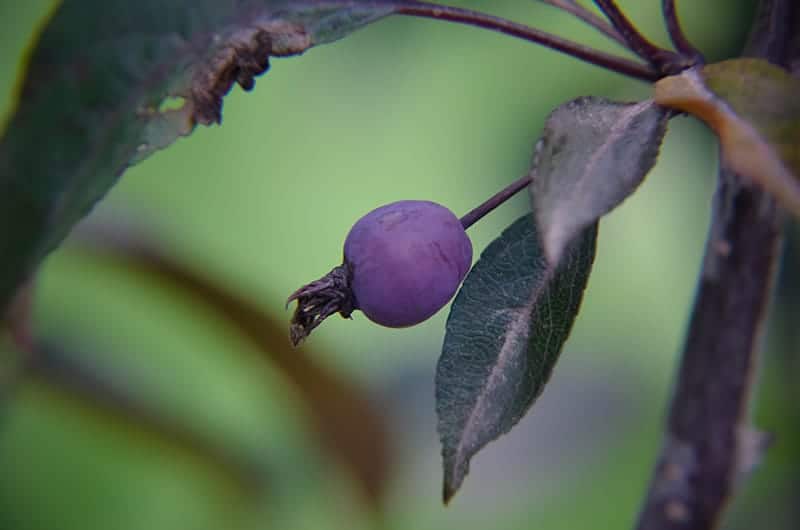
Powdery mildew
You can identify a case of powdery mildew from the patches of powder that can appear on both the leaves and fruit. The powder can vary in color from white to gray and is typically found on crabapple trees in midsummer.
Fireblight
The name of this disease comes from the visual damage it causes to the tree. Affected trees exhibit areas of the trunk, blossoms, and branches that look scorched and brown. If the disease does spread to the trunk, then it can kill the tree, so if you spot signs of it, then it needs to be addressed immediately.
Cedar-apple rust
This disease is a result of cedar trees and crabapple trees being planted too close together. Damage comes in the form of bloated orange spots on the branches, apples, and foliage.
Apple scab
If the leaves of your tree turn brown and fall off in midsummer, then your crabapple is probably suffering from apple scab disease. It is a common but very harmful disease and is most prevalent in areas that experience moist springs. Leaves usually start by turning gray with a velvety texture and some exhibit green spots. They will eventually turn brown and drop prematurely. Fruit will also become misshapen and unattractive when affected by this disease.
Are Crabapples Edible?
Absolutely! They are most often devoured by birds and wildlife, but they can be used in recipes to make delicious food for us humans, too. Crabapples are typically ripe by fall, but when eaten raw, they can be bitter and unpleasant. Instead, use them in recipes to bring out their sweet apple flavor. Crabapples have a high pectin content, which is what sets jams and jellies. They can be added to other fruit jams to help set them, or you can make crabapple jelly by itself if you enjoy apple flavored preserves.
